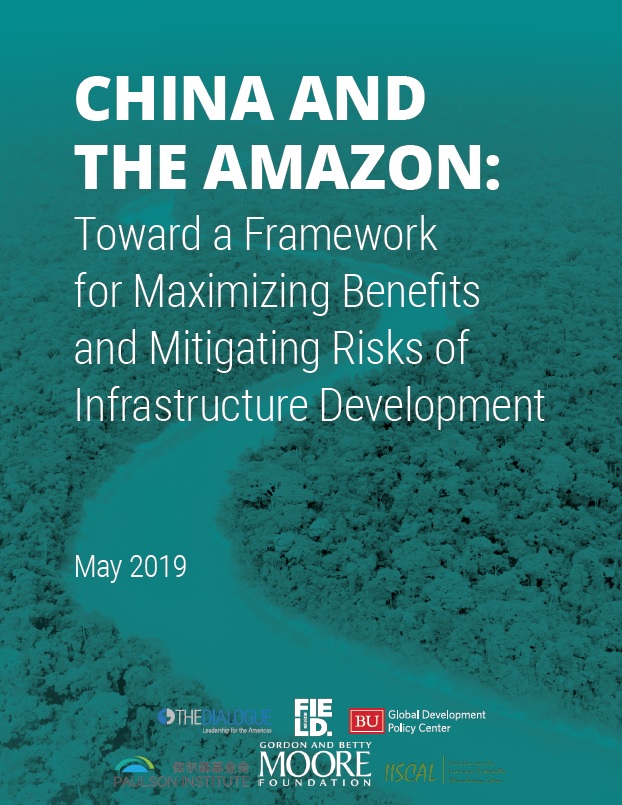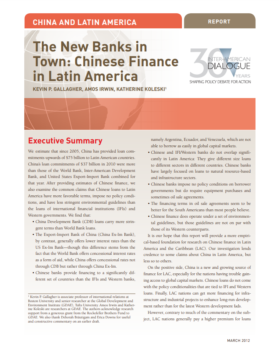The Politics Of Disaster Relief
After a 7.0 magnitude earthquake struck Haiti, the aftershock reached China in ways that few anticipated.The earthquake forced Chinese leaders to navigate the tricky politics of disaster relief.
The Inter-American Dialogue, Boston University Global Development Policy (GDP) Center, China-Latin America Sustainable Investments Initiative (CLASII), Field Museum, and Paulson Institute are pleased to co-publish this significant analysis on Chinese infrastructure investment in the Amazon. Our report, "China and the Amazon: Toward a Framework for Maximizing Benefits and Mitigating Risks of Infrastructure Development," is the product of more than a year of collaborative work by representatives from these and several other public and non-governmental organizations in China, Latin America, the US, and Europe.
The emergence of China as a new economic partner for Amazon basin countries has brought benefits to South America and China alike. In less than two decades, China has become an important market for the region’s products and an essential source of finance and investment. The burgeoning relationship has granted China access to new products from the Americas and provided a new market for Chinese exports, financing, and overseas investment. In this time, China has become South America’s lead trading partner, and China’s policy banks—the China Development Bank (CDB) and Export-Import Bank of China (CHEXIM)—together constitute the largest source of development finance for the region.
However, this new scenario presents trade offs in the form of impacts on the Amazon Basin’s unique biological and cultural diversity, global climate stability, and well being of local people. Without special care to avoid and minimize ecological and social impacts, the costs of development run the risk of outweighing its gains. The Amazon Basin—Earth’s largest forested expanse—is particularly sensitive to infrastructure growth that leads to deforestation and forest degradation.
With this in mind, our work, which was led by the Field Museum and generously funded by the Gordon and Betty Moore Foundation, has sought to provide an in-depth overview of the various factors likely to shape Chinese overseas investment in the coming years, the anticipated effects of Chinese infrastructure development in the Amazon region, and thoughtful and actionable recommendations to ensure best outcomes.
We hope that this timely resource will guide and inform decision-making by the many actors shaping infrastructure project selection and implementation in the Amazon region. Above all, it is critical that China emerge as a world leader in greening infrastructure development—especially in the fragile and globally important Amazon. China already has demonstrated leadership in addressing climate change, and the country could become a driving force in resilience and sustainability by implementing a green Belt and Road Initiative, in line with host countries’ goals and obligations.
APPENDICES:
Appendix A. Chinese Overseas Development Guidelines
Appendix B. Select Chinese Actors
Appendix C. Select Third-Party Actors
Appendix D. Select Host-Country Actors
Appendix E. Country Snapshots
Appendix F. Case Study How-To
Appendix G. Syntheses from Webinars 1-4
After a 7.0 magnitude earthquake struck Haiti, the aftershock reached China in ways that few anticipated.The earthquake forced Chinese leaders to navigate the tricky politics of disaster relief.
In the past year, the Bolivian government has emerged as an outspoken critic of climate change policies.
Estimates of the volume, composition, and characteristics of Chinese lending to the region since 2005.

